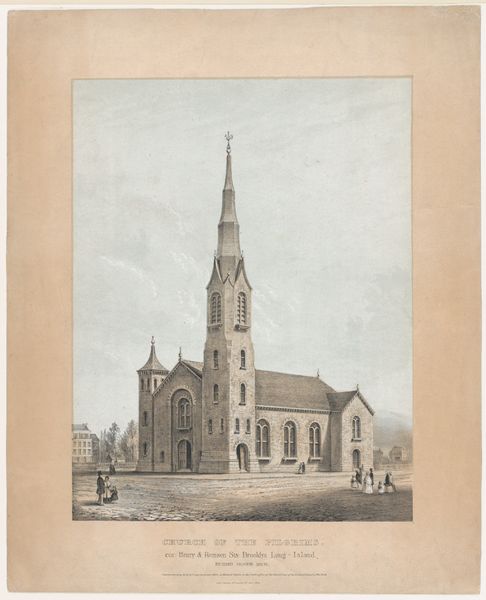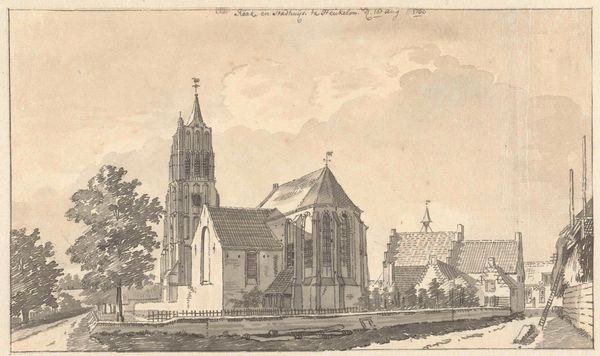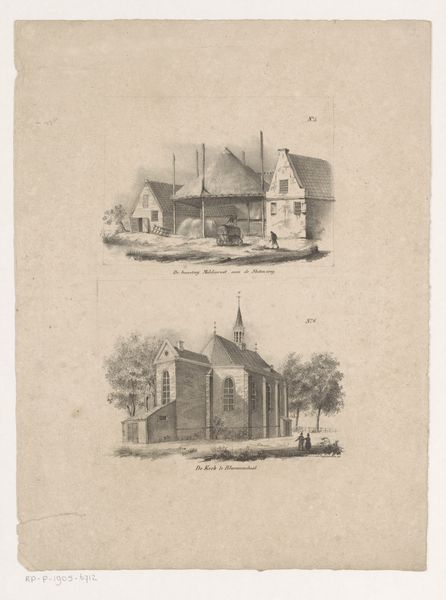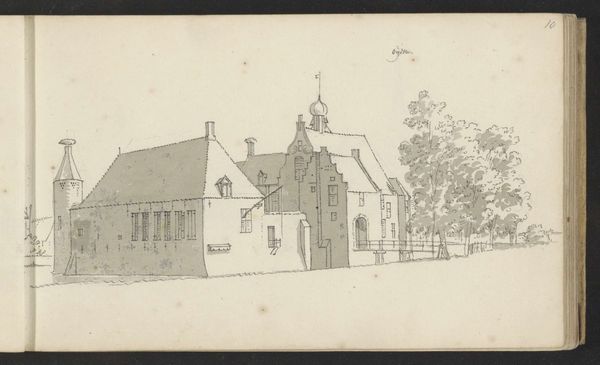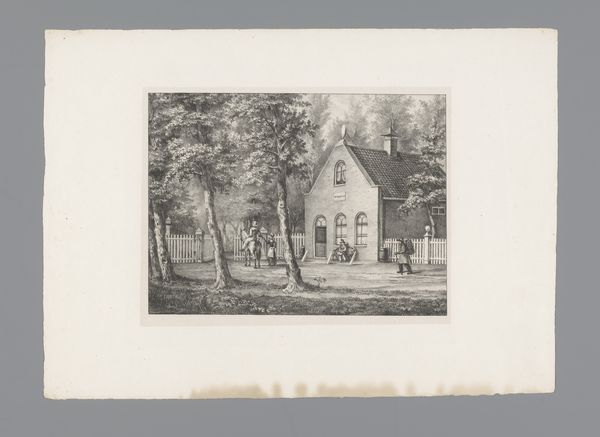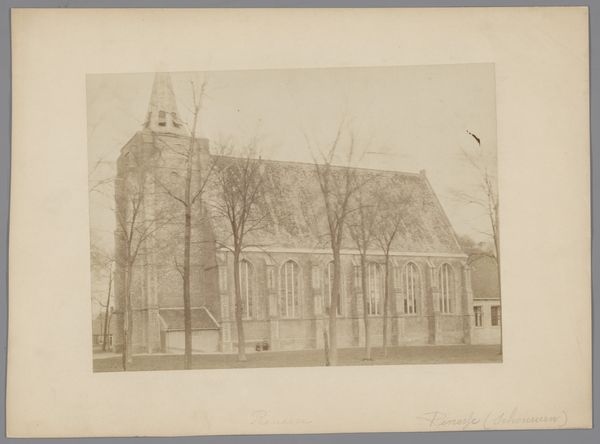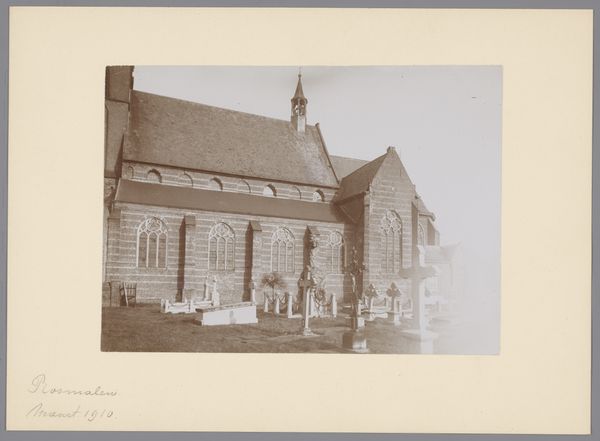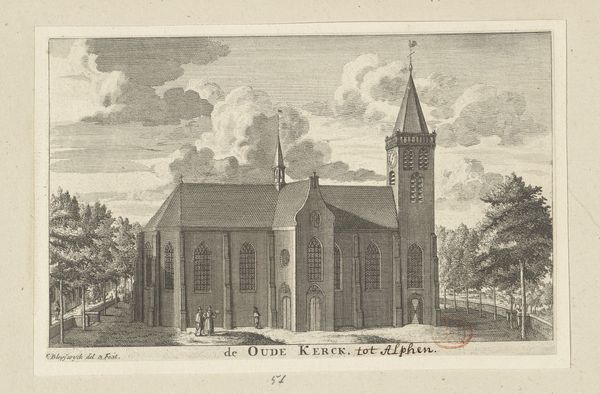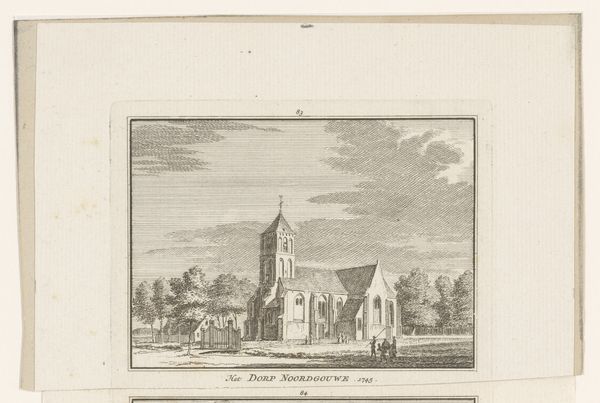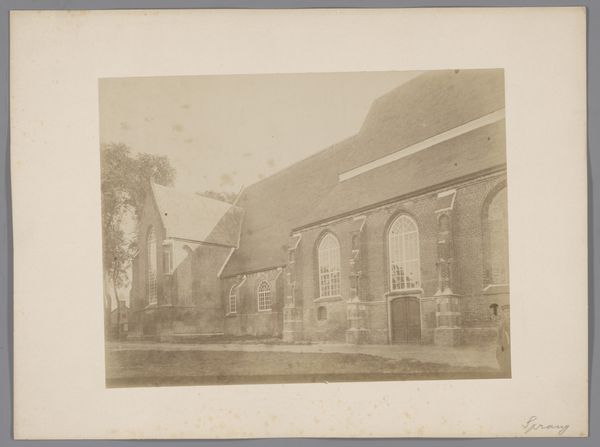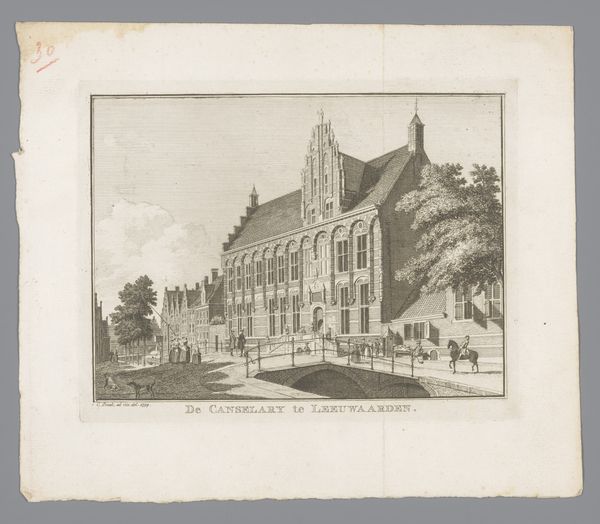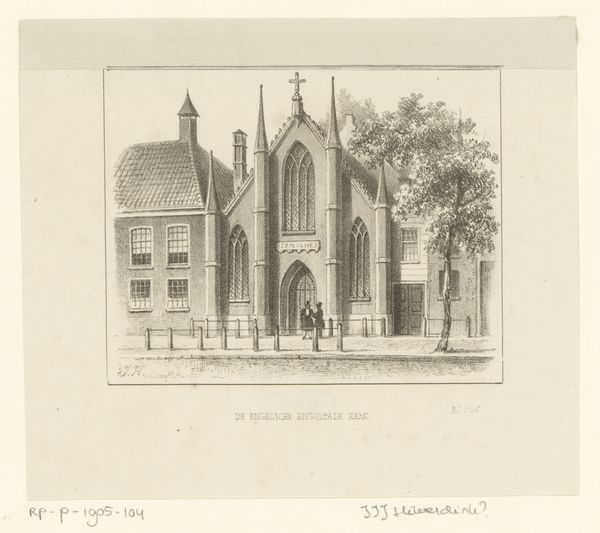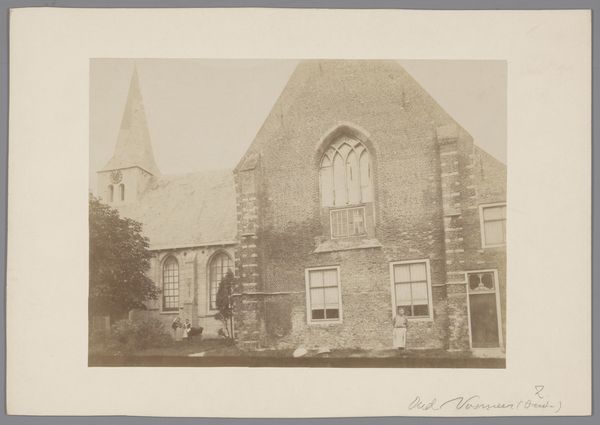
print, engraving
#
dutch-golden-age
# print
#
romanticism
#
cityscape
#
engraving
#
realism
Dimensions: height 133 mm, width 225 mm
Copyright: Rijks Museum: Open Domain
Editor: So, this is "Gezicht op gracht en Prinsekerk in Rotterdam" by Hendrik Altmann, likely created sometime between 1830 and 1863. It's an engraving, a print of a cityscape, really detailed. I am curious to know more, the structure and use of light here feels so considered... How do you interpret this work, focusing on its formal elements? Curator: Let's examine the geometric elements at play. The linear precision of the engraving defines the architectural forms, notice the sharp angles of the Prinsekerk. The artist has meticulously constructed space using linear perspective. Note the depth created by the canal receding into the background, anchored on either side with increasingly lighter shading towards the horizon. How do the lines guide your eye? Editor: They lead me to the church, definitely, but the tree on the left also sort of halts that progression and creates an asymmetrical balance. Also, the building next to it creates another focal point. The variations in tone almost become characters, do you see a tension there between representation and abstraction? Curator: Indeed, the artist orchestrates a dialogue between crisp detail and softer, atmospheric effects through varied line weights and hatching techniques. Do you see how Altmann plays with light and shadow to sculpt form, adding depth to the facade of the Prinsekerk? How do these tonal contrasts work to elevate a commonplace scene? Editor: It really brings the image to life, almost animating it. The shadows on the building’s facade highlight its architectural details while adding dynamism. I wouldn’t say I knew this church before looking at it more carefully! Curator: Altmann emphasizes order through geometry while employing subtle irregularities, inviting a deeper appreciation. Ultimately it elevates this architectural portrait through thoughtful organization. This manipulation highlights the constructed nature of seeing, in a time when realistic depiction was the high goal. Editor: Thank you. I am starting to understand more about Altmann's choices. Focusing on composition allows me to see not just what's depicted, but also how the image means. Curator: My pleasure. I hope it sparked more exploration into how form embodies artistic intention.
Comments
No comments
Be the first to comment and join the conversation on the ultimate creative platform.
